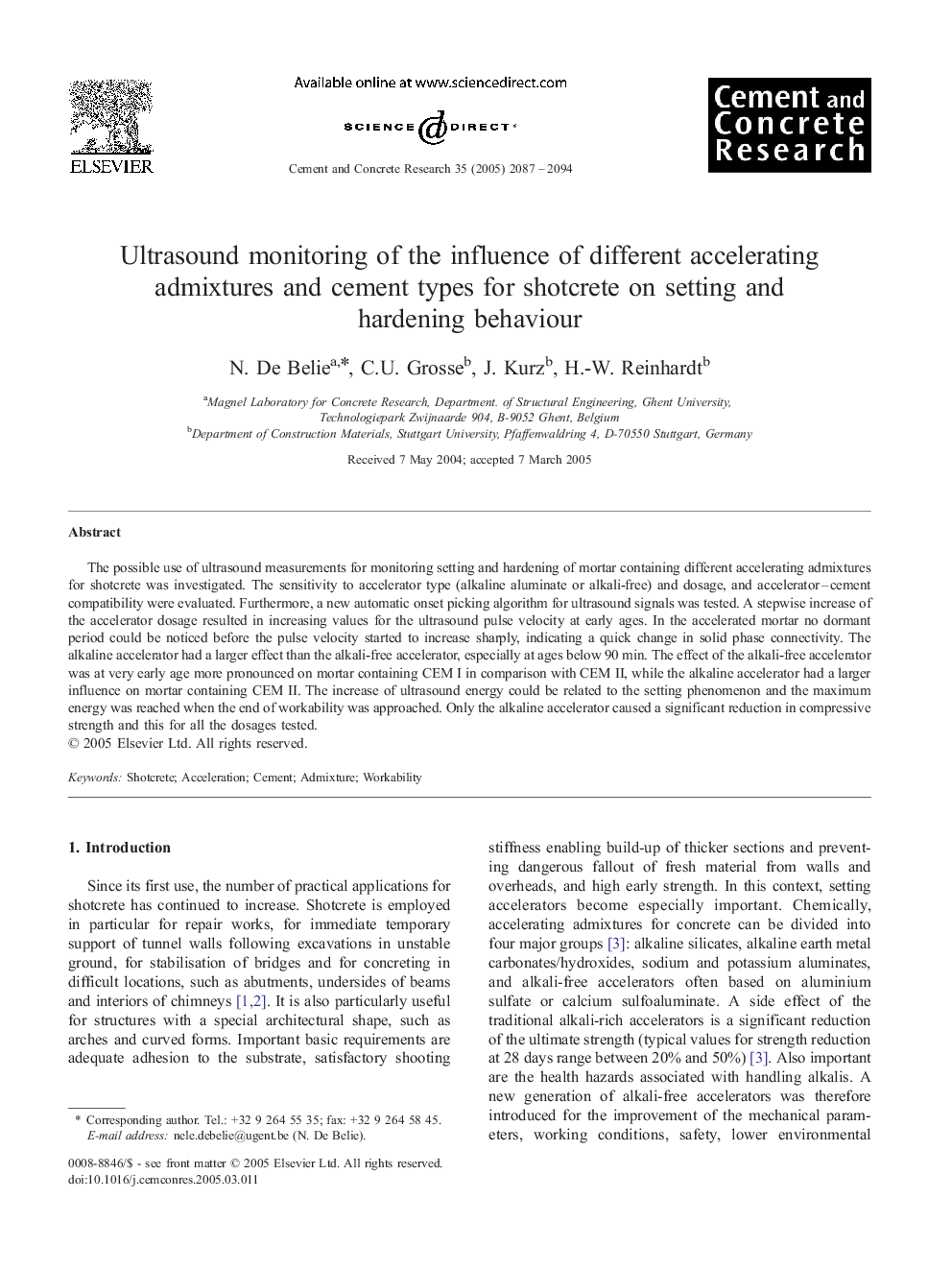| Article ID | Journal | Published Year | Pages | File Type |
|---|---|---|---|---|
| 1458136 | Cement and Concrete Research | 2005 | 8 Pages |
The possible use of ultrasound measurements for monitoring setting and hardening of mortar containing different accelerating admixtures for shotcrete was investigated. The sensitivity to accelerator type (alkaline aluminate or alkali-free) and dosage, and accelerator–cement compatibility were evaluated. Furthermore, a new automatic onset picking algorithm for ultrasound signals was tested. A stepwise increase of the accelerator dosage resulted in increasing values for the ultrasound pulse velocity at early ages. In the accelerated mortar no dormant period could be noticed before the pulse velocity started to increase sharply, indicating a quick change in solid phase connectivity. The alkaline accelerator had a larger effect than the alkali-free accelerator, especially at ages below 90 min. The effect of the alkali-free accelerator was at very early age more pronounced on mortar containing CEM I in comparison with CEM II, while the alkaline accelerator had a larger influence on mortar containing CEM II. The increase of ultrasound energy could be related to the setting phenomenon and the maximum energy was reached when the end of workability was approached. Only the alkaline accelerator caused a significant reduction in compressive strength and this for all the dosages tested.
